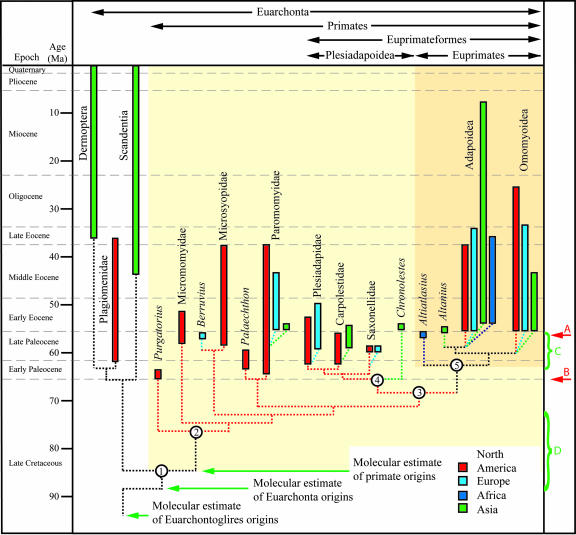Fig. 4.
Phylogeny of euarchontans based on a single-most-parsimonious cladogram (tree length = 555, consistency index = 0.548, retention index = 0.523). Divergences of sister taxa are shown schematically, with no implied knowledge of the exact timing of cladogenesis. Node 1 is Euarchonta. Decay indices and bootstrap percentages are as follows (respectively): Node 2 (Primates) = 4, 67%; Node 3 (Euprimateformes) = 3, 30%; Node 4 (Plesiadapoidea) = 2, 52%; Node 5 (Euprimates) = 1, 42%; Scandentia + Dermoptera = 5, 64%. When the analysis is run with all characters unordered, the topology of the resulting single-most-parsimonious cladogram is identical to the one presented here. See SI Text, Part 5, for a list of apomorphies supporting each node. Molecular estimate of primate origins from Springer et al. (31). Logistical model estimate of euprimate origins (D) from Tavaré et al. (32) and probability estimate of euprimate origins (C) from Gingerich and Uhen (33). Molecular divergence estimates (31) as well as the logistical model estimate (32) are notably older than the first occurrences of Euprimates (A) and Primates (B) documented in the fossil record. Results from our analysis suggest that Primates (light tan area) originated in the latest Cretaceous or earliest Paleocene of North America, Euprimateformes originated in the early Paleocene of either Asia or North America, and Euprimates (dark tan rectangle) originated in the Late Paleocene of Asia, Africa, or North America.

